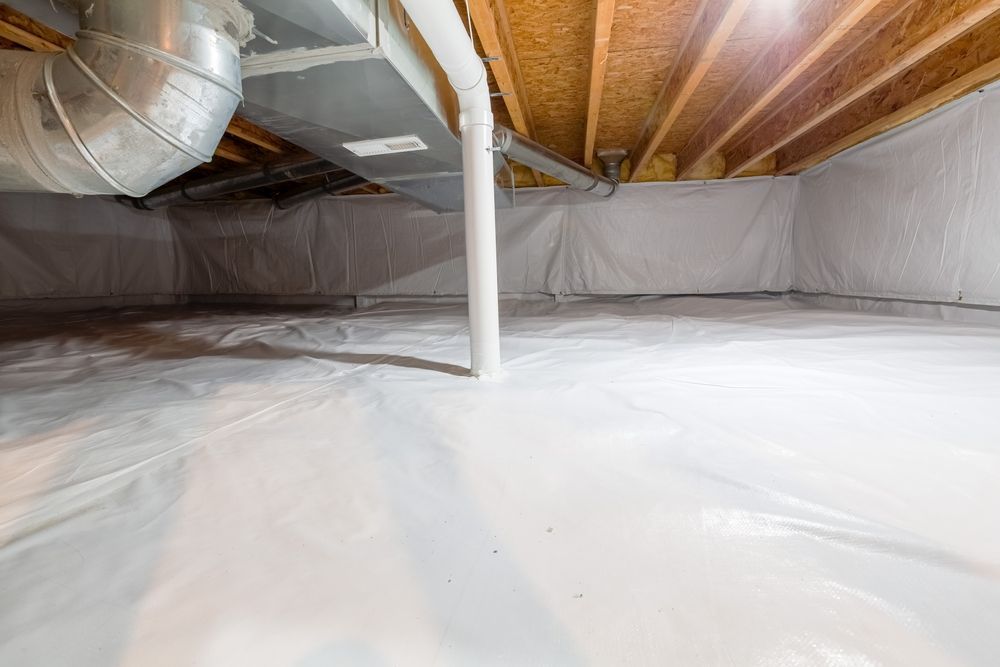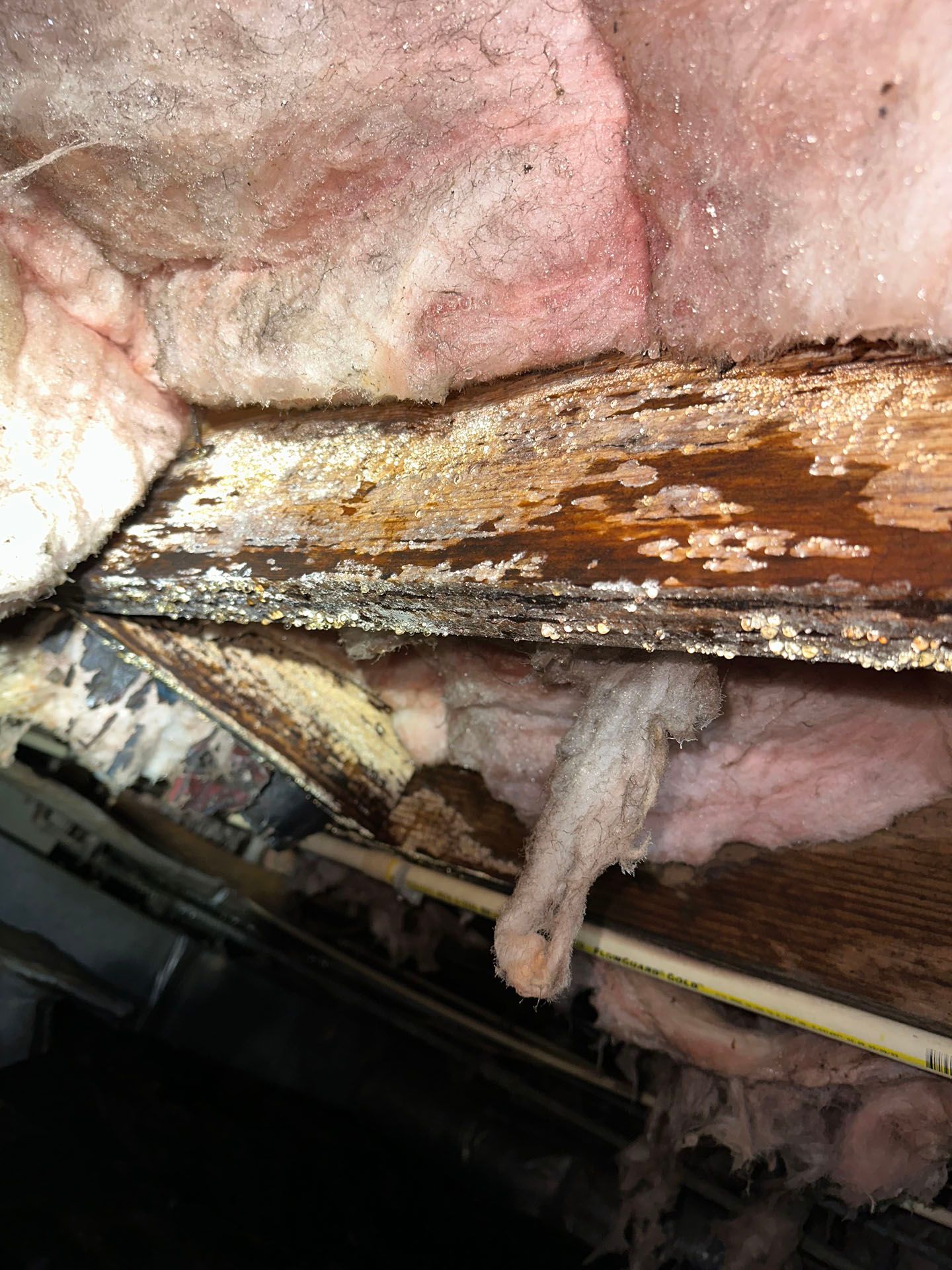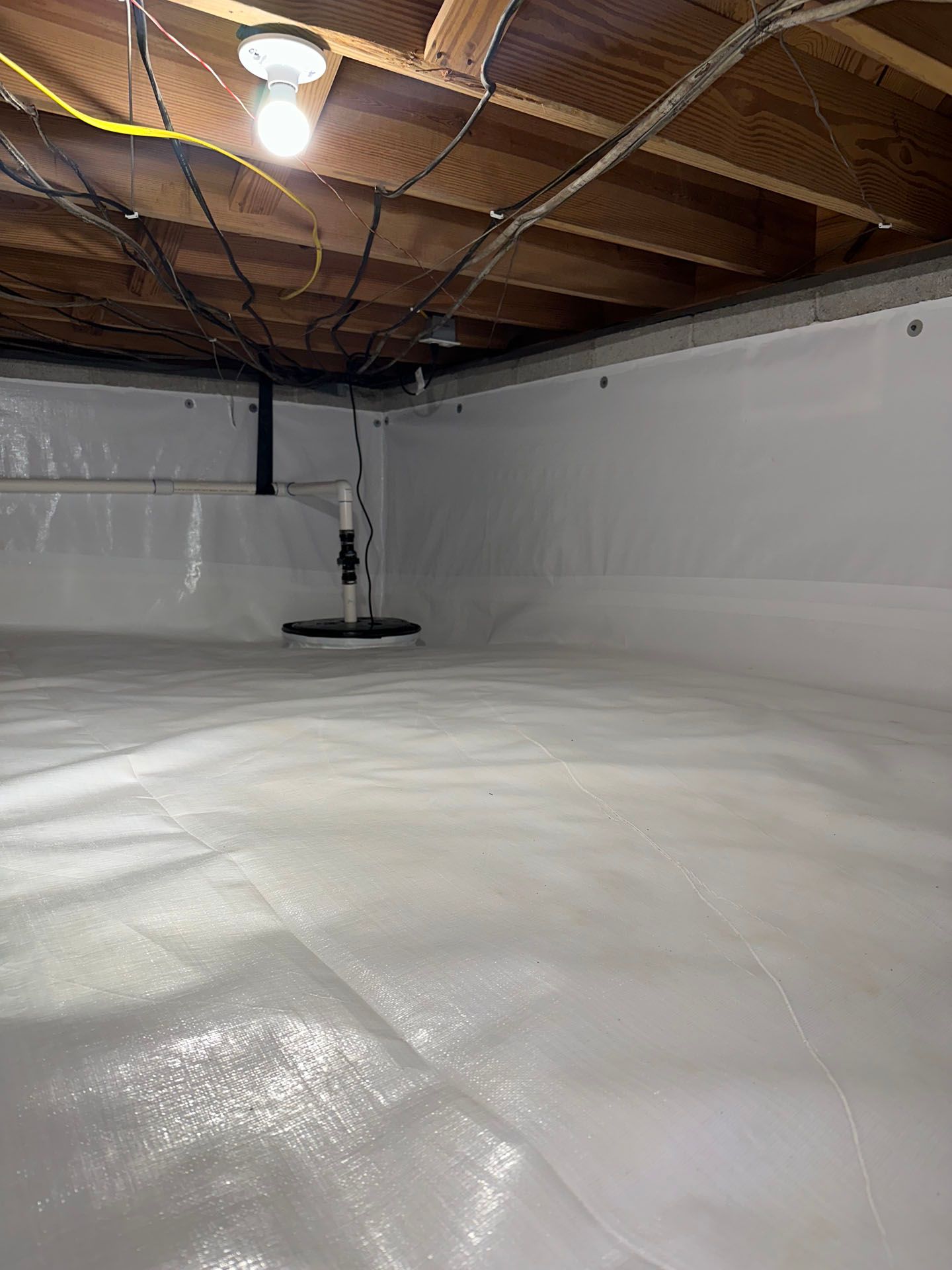Huntsville, Alabama

Claim Your FREE Crawl Space Inspection Today!
Sawyer Williams: 256-727-4422
Schedule Your Free estimate!
No-Obligation, Free Inspections
No-Obligation Free Estimates
We Warranty All of Our Work
100% Satisfaction Guaranteed
Having a crawl space can make all the difference in terms of energy efficiency and in some cases, it can even reduce the risk of water damage. But, are you aware that crawl space encapsulation is an important part of maintaining this space and could be covered by your insurance? It’s an important question to ask as it can help you save time, money, and potential future issues. To find out, read on and discover all you need to know about crawl space encapsulation insurance coverage — plus, an important tip to make sure you’re protected in the long run.
Quick Overview of Key Question
It depends on the coverage of your specific home insurance provider. Contact them directly to find out if they cover crawl space encapsulation and what your deductibles might be.
What is Crawl Space Encapsulation?
Crawl space encapsulation is the process of isolating a crawl space from the external environment using specialized materials and techniques. It involves air and moisture-sealing all walls and floors, installing insulation, and controlling ventilation to reduce energy loss in the home. The goal of crawl space encapsulation is to create a dry, tight environment with improved indoor air quality by eliminating mold growth and moisture issues in the home.
Supporters of crawl space encapsulation argue that it reduces energy costs in the home and protects a property from potential water damage. They note that an unencapsulated crawl space can allow humid air to enter the home, creating musty odors and encourages mold growth which is costly to repair. Additionally, excessive moisture in an unencapsulated crawl space can lead to rot or insect infestation, also expensive problems to fix. Encapsulating a crawlspace helps prevent these issues from arising by maintaining a dry, tight seal that ensures proper ventilation throughout the entire home.
On the other hand, skeptics point out that any existing water damage needs to be repaired before encapsulation in order for it to be effective, making this process more expensive than they anticipated. Furthermore, they note that mildew and mold can still form on any moist surfaces if there are air leaks in the sealing, which would need to be identified and fixed prior to encapsulation.
Ultimately, while there are pros and cons associated with crawl space encapsulation, its primary benefit is providing an additional layer of protection against water damage as well as improved indoor air quality. As such, it's important to understand why this process is important when considering whether or not its covered by insurance. To learn more about why crawl space encapsulation is important, read on.
- According to the National Foundation for Environmental Good, 21 percent of homeowners’ insurance policies cover crawl space encapsulation.
- Many states require home inspectors to report on the condition of a crawl space during regular inspections.
- The average cost to encapsulate a 1,500 sq ft crawlspace is $3,500 - $9,000, depending on the complexity of the project.
Why is Crawl Space Encapsulation Important?
Crawl space encapsulation is a valuable way to make sure the home is properly insulated, protecting against moisture and other environmental damage that can cause health and safety problems over time. Crawl spaces are often damp, humid, filled with mold, mildew and other contaminants, which can cause a wide range of health issues as well as require extensive repairs from resulting damage. Encapsulating the space can help reduce these risks and lead to long-term benefits for the homeowner.
On one side of the argument, experts suggest that this procedure is essential to preventing water infiltration, mold growth, reducing energy costs, providing support to foundation walls, and creating a safer living environment. By using materials like vapor barriers, insulation panels, dehumidifiers and coverings on vents, the crawl space will be sealed off from outside elements leading to less intrusion of pollutants or causing condensation and damaging the air quality inside of the home.
However on the other side of the argument, some experts suggest that when every factor involved with your crawlspace is taken into account and meets or exceeds building codes or recommendations from local inspectorates then gross crawl space encapsulation may not be required. Tackling certain causes of moisture in a crawl space first before addressing any cosmetic-related issues could possibly provide satisfactory results for homeowners and for those who don't have any signs of water intrusion due to improper ventilation or minimal clearance under siding.
By taking proactive precautions to address moisture levels through proper preparation, understanding what kind of flooring exists and applying safe strategies for pest management within the confined area prior to considering complete in-depth encapsulation may reduce some of the risk factors associated with having an open or exposed crawl space foundation.
It’s important for homeowners to weigh both sides of this argument carefully and should always consult with a professional who specializes in crawl space treatments if they are considering any type of remodeling or repair work related to their crawl space area. Understanding why crawl space encapsulation may be important can help equip homeowners with more awareness when making decisions about their own spaces.
Now that we have explored why crawl space encapsulation is important, let’s explore how insurance companies look at this procedure in our next section.
How Insurance Companies Look at Crawl Space Encapsulation
When it comes to insurance coverage for crawl space encapsulation, determining whether or not it is covered can be complicated. The reality is that most insurance policies do not include coverage for crawl space encapsulation because the process is considered preventative. Even though a homeowner may have an issue that needs to be resolved in their crawl space before they can allow access to the area and put them in compliance with local building codes, insurance companies tend to deny any claims made regarding crawl space encapsulation projects due to the preemptive nature of the work.
However, there are certain cases in which some insurance companies may offer coverage for crawl space encapsulation services. These often include major damages caused by flooding, heat/cave-ins, and other natural disasters; however these instances vary widely between providers and should be carefully examined prior to starting your project or filing a claim. Additionally, some home warranties have also been known to cover issues resulting from moisture or high humidity levels within the crawl space area as well as extenuating circumstances such as mold buildup that could potentially be deemed as sewer backup clauses within their home warranty policy.
Ultimately, there are several factors that need to be taken into account when trying to assess whether or not insurance will cover select aspects of your crawl space encapsulation project. When making this determination it's best to consult directly with your provider for clarification on any pertinent questions about your particular policy as well as obtaining a second opinion from a licensed professional who can provide further insight into potential options you may have available to cover your specific needs. As a last resort, homeowners looking for more financing options may file a claim in order to receive compensation for damages that meet their provider's requirements.
By taking all of the above information into account, you'll be able to make a better informed decision on how crawls space encapsulation fits into your homeowner insurance plan and help determine if you need additional sources of funding in order to bring your project closer to completion. In these types of situations, understanding what type of coverage you have available can be the difference between needing extra financial resources or not. Now let’s look at typical insurance coverage for crawl space encapsulation so we can gain a better understanding of what’s generally offered among most major providers.
Most Important Summary Points
Most insurance policies do not offer coverage for crawl space encapsulation since it is considered a preventative measure. However, there are cases in which some providers may cover aspects of the project as well as home warranties. When trying to assess this, it's best to consult with the provider directly, obtain a second opinion from a professional and look into filing a claim if necessary. Knowing what type of coverage is available can help determine whether extra outside financial resources are needed or not.
Typical Insurance Coverage for Crawl Space Encapsulation
Crawl space encapsulation is the process of sealing up the air spaces beneath a structure's foundation to create a closed, insulated internal environment. Typically, homeowners opt for encapsulation in order to reduce energy costs and secure their homes against structural damage. But is crawl space encapsulation covered by insurance?
Though it depends on the specifics of your policy and location, most home insurance policies will not cover the full cost of a crawl space encapsulation project. This type of improvement is typically considered a maintenance expense, not an insured event. In general, any major improvements that are completed in order to prevent or mitigate future losses or damages are generally not considered “insurable” events and thus not covered by standard insurance policies.
That said, some insurance companies may offer a limited amount of coverage for certain preventive services such as crawl space encapsulation projects if these projects are shown to have significant benefits from a safety perspective or when they help to reduce the occurrence or severity of certain types of damage. This kind of specialized coverage is usually only available through specialized companies that cover high-value properties. It’s important to check with your insurance provider to make sure that you know what type of coverage you have before going ahead with any kind of protective service project.
Ultimately, it’s best to think carefully about any major home improvement project where insurance might come into play. Crawl space encapsulation is no exception - while the costs may not be covered by your current insurance policy, it can come with long-term benefits due to energy savings, improved air quality and better protection against moisture damage.
The next section will delve into the possible risks associated with not going ahead with crawl space encapsulation, as well as discuss steps you can take to ensure that your home will be safe and secure regardless of whether or not you are covered by insurance for the service.
Possible Risks Without Crawl Space Encapsulation
Without crawl space encapsulation, homeowners face a range of risks made worse by the combined effects of moisture and humidity. Without a barrier between these elements and their indoor environment, spores, allergens, and other pollutants can easily enter the home, which can lead to health issues such as asthma attacks. Furthermore, wood rot and the buildup of mold can lead to structural damages to foundations over time.
In addition to the indoor risks posed by an uncovered crawl space, there is also a financial burden for homeowners who forgo encapsulation. Homeowners with poor insulation in their crawlspaces may increase their energy costs due to accelerated heat loss from the rest of their house. Additionally, structural damage caused by insects and water could result in costly repairs or even new construction in severe cases.
It’s important for homeowners to weigh the benefits versus the dangers of leaving a crawl space uncovered. While money might be saved initially with not installing an encapsulation system, an unfamiliar layer of protection can help protect against unknown risks that could later appear in a more expensive form. With this knowledge in mind, it is also important to understand preventive measures that can be taken to ensure complete crawl space protection
With this information in mind, it's time to move forward looking at preventive measures that can be taken for complete crawlspace encapsulation. The next section will discuss how homeowners can protect themselves and reduce the risk of health and structural damage associated with an uncapped space.
Preventive Measures for Crawl Space Encapsulation
Preventive measures for crawl space encapsulation can be effective in preserving the condition of your home and its foundation. Although insurance coverage may vary, taking proactive steps to encapsulate a crawl space can pay off significantly in the long run.
In terms of crawl space encapsulation, preventive measures include installing a vapor barrier, eliminating moisture and pest problems, reinforcing the foundation and ventilation system, insulation against heat loss, and inspecting HVAC equipment. Installing a vapor barrier can help protect your home from any water leaks or flooding that may occur. Eliminating any existing moisture and pest problems ensures that mold growth is prevented while keeping rodents and other pests out of the confined space. Reinforcing the foundation and ventilation system helps keep obstructions out of the vents so that air can flow freely. Insulating your crawl space increases energy efficiency, as well as preventing cold air from entering and warm air from escaping. Lastly, inspecting HVAC equipment helps keep your home safe from any potential liabilities associated with insufficient heating/cooling or faulty systems.
On one side of the argument, some homeowners may see investing in preventive measures for crawl space encapsulation as an unnecessary expense- opting to skip these steps for their own benefit. On the other hand, taking preventative measure for crawl space encapsulation can be beneficial in the long run by saving money on repairs and minimizing potential lawsuits due to hazardous living conditions created by moisture or pests damage. Ultimately, it is up to individual homeowners to decide if they want to invest in preventive measures for their crawl spaces- though doing so could save them significant costs later on down the line.
To sum up, preventive measures for crawl space encapsulation are important steps homeowners should consider taking in order to preserve and protect their home's foundation. Taking such proactive steps can prove fruitful in mitigating potential liabilities related to water damage or hazardous living conditions later down the line - even if insurance coverage varies from policy to policy. With that said, now let's move onto our conclusion...
Conclusion
The answer to the question of whether crawl space encapsulation is covered by insurance depends on a variety of factors, including type of home insurance coverage, location, and cost of the project. Homeowners should always consult their insurance provider prior to beginning any work to ensure that they will be fully covered in the event of any damage or injury. Homeowners who wish to encapsulate a crawl space should understand that the process will likely require some sort of out-of-pocket expense as well as documentation for the job in order for it to be considered by their insurance provider.
On one side, it can make sense from an insurance perspective to include crawl space encapsulation in your policy since it can reduce the risk of water damage due to flooding or high humidity levels in areas prone to such events. On the other side, many insurance companies may not cover this type of work due to the risks associated with adding potentially flammable materials (such as insulation) into an enclosed environment. Ultimately, it is up to homeowners themselves to weigh these considerations and determine if the expense and hassle of getting coverage through their insurance provider are worth it.
Common Questions and Responses
KEY QUESTIONS:
Yes, crawl space encapsulation can be covered by insurance in some cases. Depending on the cause of water intrusion and the extent of damage to the crawl space, homeowners may be able to get coverage, including reimbursement for encapsulation services. Insurance companies might cover costs associated with encapsulating a crawl space if it is done to prevent further damage or help mitigate existing damage from flooding, high winds, heavy rain, sewer backups, and other forms of water intrusion. It is important to contact your insurance provider directly to discuss what coverage options are available for this type of service.
What does crawl space encapsulation entail?
Crawl space encapsulation is a process that involves sealing off and insulating an area such as a basement or crawl space in a home, in order to create a more livable environment. It entails full sealing of the interior walls and floors of the space, and installing a barrier to block moisture and air infiltration. Crawl space encapsulation also includes installing drainage systems and other components to manage water within the space, as well as various insulation materials to protect against temperature extremes. Ultimately, this process helps improve the energy efficiency of a home and can make it more comfortable for occupants to live in.
Are there any limitations on coverage for crawl space encapsulation?
The answer to this question depends on the type of insurance you have. Generally speaking, homeowners' insurance policies cover damages related to flooding caused by natural disasters like hurricanes, tornadoes, and floods. However, they may not cover damages due to water seepage or other types of water damage in crawl spaces. Additionally, some companies may not offer any coverage if you choose to encapsulate your crawl space.
It is best to contact your insurance provider directly to determine if they cover crawl space encapsulation and what limitations, restrictions, or exclusions may apply. Be sure to get everything in writing so that you know exactly what is covered in case of a future issue.
What types of insurance policies provide coverage for crawl space encapsulation?
The types of insurance policies that provide coverage for crawl space encapsulation typically depend on the extent of the repairs and the cause of damage being protected against. Generally speaking, homeowners' insurance policies may provide limited coverage for minor repairs, such as repairing any damage caused by water leaking into the crawl space. Home warranty policies may also include some coverage for larger repair or replacement costs related to encapsulating a crawl space. On the other hand, flood insurance specifically covers waterproofing and encapsulating a crawl space due to flooding.
Beyond regular homeowner's insurance, it's important to look at specific riders and endorsements offered by insurers that cover higher amounts and additional benefits for more comprehensive repairs involving crawl spaces. For example, some insurer’s offer 'Perils Covered' riders which allows for coverage up to certain limits for damages caused by weather or other named perils, including water leaks.
It's also important to shop around and compare quotes from different providers to find an insurance policy that best suits your needs, as each policy will vary in terms of coverage scope and cost. It's also recommended to discuss with your insurer the specifics of what needs to be done with regards to encapsulating a crawl space and whether or not it is covered under any existing policy.
Is crawl space encapsulation covered by insurance?
The answer to this question is both yes and no. It depends on several factors, including the type of insurance you have and what elements are involved in your crawl space encapsulation. Generally speaking, most home insurance policies will cover damages caused by water infiltration from the exterior of a home or from flooding, but not necessarily for improvements such as crawl space encapsulation. Therefore, it is important to check with your insurer to determine if this type of upgrade is eligible for coverage under your policy. Additionally, certain types of coverage may provide protection for certain materials and components related to encapsulation.
Before embarking on a crawl space encapsulation project, make sure to discuss your plans with an insurance professional who can advise you on any particular coverage provisions and requirements.

Written by Sawyer Williams
Precision Crawlspace & Renovations
Sawyer has specialized in crawl space and foundation repairs for over six years. As the founder of Precision Crawlspace and Renovations, he is one of Huntsville's top experts in crawlspace moisture control. He has prior experience installing these systems, which has prepared him to solve complex problems related to crawl space encapsulation, mold remediation, and waterproofing.
Recent Blog Posts
Huntsville's Crawl Space News



What are you waiting for?
We Solve Crawl Space Issues!
Get reliable crawl space repair services at an affordable price, provided with the high level of service you deserve.
Call Us Today at: 256-727-4422
All Rights Reserved | Precision Crawlspace & Renovations

